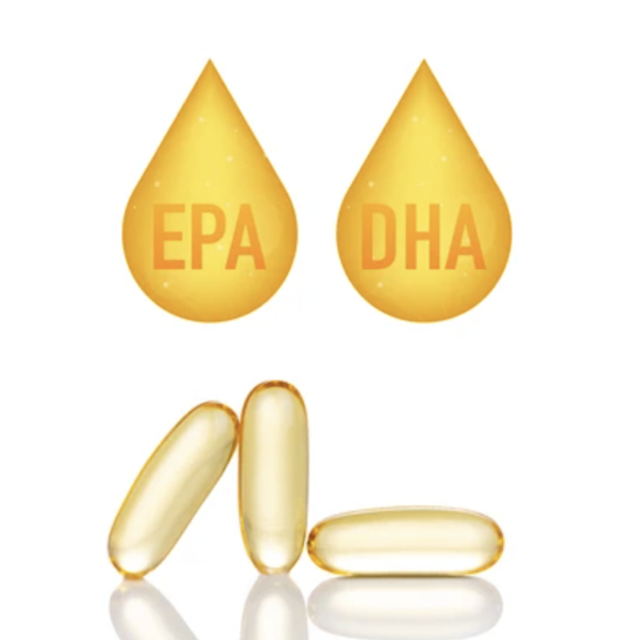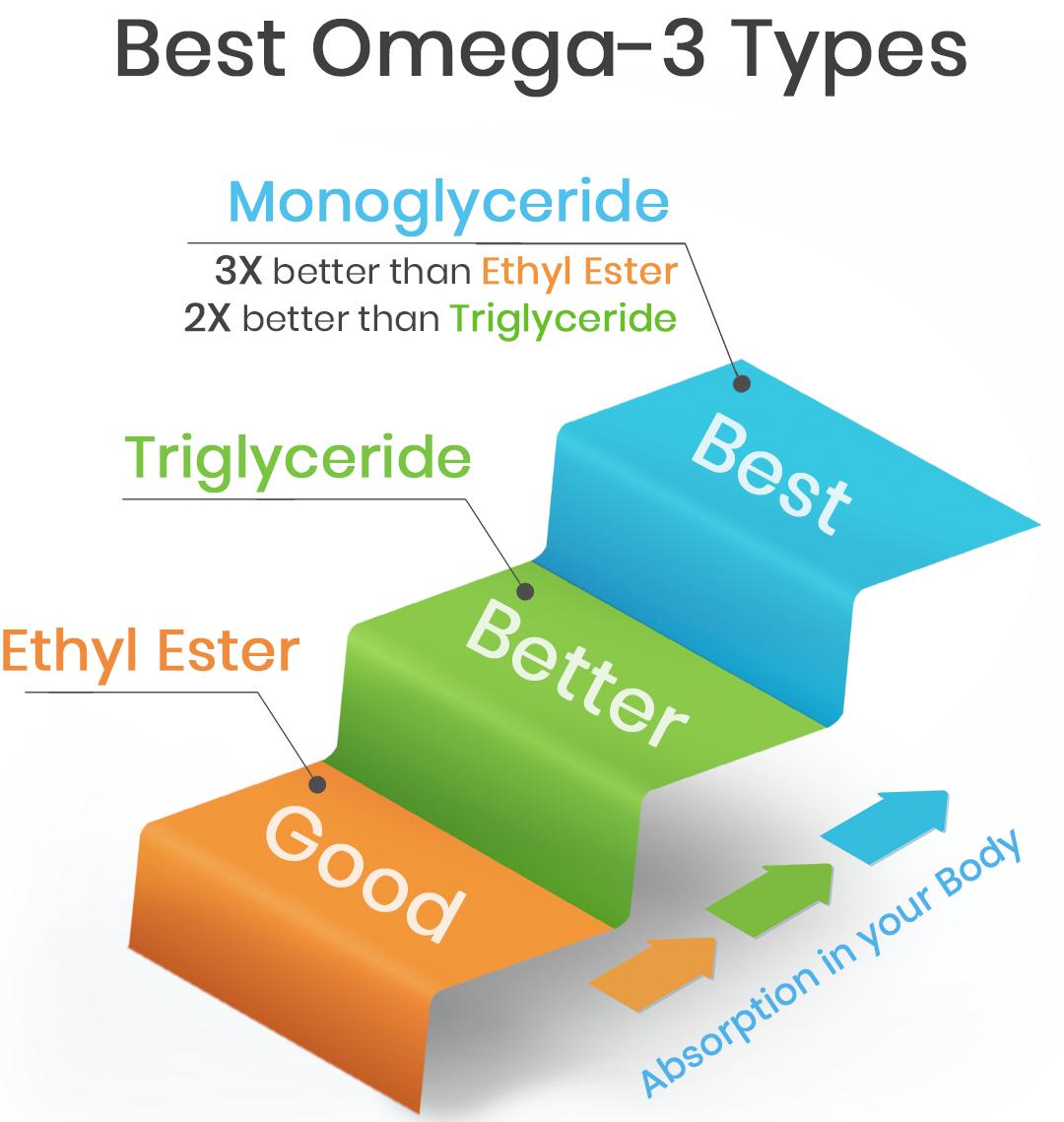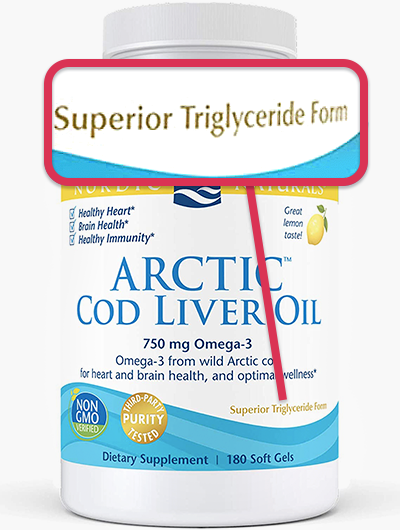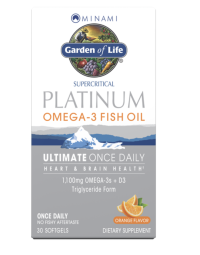Most people know omega-3s are beneficial to us as part of a healthy diet, but did you know that not all omega-3 products are built the same? As a supplement, omega-3s can come in three main forms — ethyl esters, triglycerides, or monoglycerides.
Deciding which form to take can impact the actual amount of omega-3 fatty acids you receive. Knowing the difference between the three forms can help you get the most out of your omega-3 supplements.


The Different Forms of Omega 3
Omega-3s contain two main components — the fatty acids EPA and DHA. A steady amount of EPA and DHA in the body has been shown to support health and promote improvement of disease outcomes. While omega-3s can be found in a regular diet, supplements are often used in order to get a beneficial amount of EPA and DHA into the body. This way, you can ensure you’re getting the exact amount of omega-3s needed.
Omega-3 supplements are usually created from fish oil that has been extracted and refined. The oil is converted into either ester ethyl, triglyceride, or monoglyceride form. Studies have shown that the form of omega-3 you’re taking does affect how much EPA and DHA your body can take in from the supplement.
Knowing the difference can help you increase the amounts of EPA and DHA you receive daily.


Why Triglyceride Omega 3 Form is Better than Ethyl Ester Form
When an omega-3 is in its ethyl ester form, it contains ethanol. This means that after consumption, the ethyl ester will need to be broken down into the EPA/DHA component and the ethanol component. Any ethanol consumed in the body must be processed through the liver after being ingested, so this is where it's broken down.
Once the EPA and DHA are broken apart from the ethanol, they will then be converted to a triglyceride form by the body. The triglyceride form is what enters the bloodstream to start making its effects on the body. The breakdown of the different components within the ethyl ester form is what causes some of the omega-3 component’s availability to be lost.
Taking an omega-3 supplement that is already in triglyceride form allows the body to skip the additional step of breaking down the ethyl ester form, thus increasing the amounts of EPA and DHA that will be taken up by the body.

Why Monoglyceride Form is Better than Triglyceride Omega 3 Form
Monoglycerides and triglycerides are similar in that they’re both “glycerides” made up of fatty acids and a molecule called glycerol (hence their names). The main difference is that monoglycerides have just one fatty acid chain while triglycerides have three.
When triglycerides are ingested, they get broken down into monoglycerides during digestion in order to be fully absorbed. Having an omega-3 supplement that is already in monoglyceride form circumvents the breakdown of the triglyceride form, and helps prevent the loss of some of the EPA and DHA.
The monoglyceride form is even called the “predigested” form, as it comes in the structure most readily available to be absorbed into the body, without much further break down. This allows a higher amount of EPA and DHA to be absorbed by the body from the supplement.

How to Know What's in Your Omega 3 Supplement
When choosing an omega-3 supplement, it is important to look at the ingredient list on the product to see what form it’s in. On the product label, you should look for any wording that indicates the form, like “omega-3 fatty acids as triglycerides.”
It is also important to look at the purity of the product you are purchasing. You can check this by ensuring that the products have passed the Global Organization for EPA & DHA Omega-3s (GOED) standards for purity, or have been verified by third-party standards. These standards ensure that all products available to consumers pass government requirements for purity and quality.
Be sure to check that your supplements meet the following purity standards: free from PCBs (a high toxicity product banned in the United States), dioxins (highly toxic compound that can be a byproduct of manufacturing processes), and lead or mercury contamination.
Summary for Triglyceride Omega 3
Triglyceride omegas are a great form of omega but not the best. Monoglyceride Omega-3’s can be absorbed twice as much as triglyceride Omega-3’s, and three times more than ethyl ester Omega-3’s. Reasons for this may include that monoglycerides more readily emulsify in the digestive system and that they are directly absorbable.
FAQ for Triglyceride Omega 3
Our bodies need a certain amount of fats in order to function properly. Omega-3s are a type of fat that our bodies can’t produce on their own. They are also considered an “essential fat,” meaning our bodies need omega-3s to run certain biological processes. Omega-3s help with the production of hormones, which then affects regulation of blood clots, artery constriction and relaxation, and inflammation, to name a few. This means omega-3s can play a role in the prevention of heart disease and stroke, lowering cholesterol, along with the possibility of promoting control over rheumatoid arthritis, lupus, and eczema.
Studies have shown that the benefits of omega-3s to humans may also be applicable to canines. These studies have shown that adding omega-3s to a canine’s diet has produced a reduction in the clinical effects of osteoarthritis. Anti-inflammatory effects in dogs have also been observed with proper omega-3 use. There are even reports of improved skin and haircoat growth and quality in the studies. Omega-3 intake can be increased by adding whole fish, such as anchovies or sardines, to your dog’s diet. If looking into omega-3 supplementation, the current recommended dose of fish oil for dogs is 75-100 mg per kg of weight. Although the benefits sound exciting, beware that giving your dog too much omega-3 can result in vomiting and diarrhea. Omega-3 dosing that’s too high can even affect wound healing or cause other serious side effects. Since more studies are needed to show definitive evidence of supplement safety for animals, always consult your vet before starting your animal on any supplements.
The first way people typically try to add more omega-3s to their body is through diet. A diet rich in omega-3s is rich in fish and other seafood, nuts and seeds, plant oils, and fortified foods such as certain brands of yogurt and soy beverages. The main downside of this approach is that most people are not able to adequately take in omega-3s consistently through their diet, so supplements are another great option. Omega-3 supplements can come from a few sources. These include fish oil, krill oil, cod liver oil, and algal oil. The latter is a vegetarian option, which is produced from algae. These supplements can be found in liquid, pill, and capsule forms (capsule form is the most commonly available). If deemed necessary by a physician, omega-3 prescriptions are also available. These include the brands Vascepa, Lovaza, and Epanova. Be sure to always speak with your pharmacist or physician before introducing a new product to your medication regimen.
References for Triglyceride Omega 3
- Chevalier L, Plourde M. Comparison of pharmacokinetics of omega-3 fatty acid supplements in monoacylglycerol or ethyl ester in humans: a randomized controlled trial. Eur J Clin Nutr. 2020;75(4):680-688.
- Chevalier L, Plourde M. Comparison of pharmacokinetics of omega-3 fatty acid supplements in monoacylglycerol or ethyl ester in humans: a randomized controlled trial. Eur J Clin Nutr. 2020;75(4):680-688.
- Chevalier L, Vachon A, Plourde M. Pharmacokinetics of Supplemental Omega-3 Fatty Acids Esterified in Monoglycerides, Ethyl Esters, or Triglycerides in Adults in a Randomized Crossover Trial. J Nutr. 2021;151(5):1111-1118.
- Combarros D, Castilla-Castaño E, Lecru L, Pressanti C, Amalric N, Cadiergues M. A prospective, randomized, double blind, placebo-controlled evaluation of the effects of an n-3 essential fatty acids supplement (Agepi® ω3) on clinical signs, and fatty acid concentrations in the erythrocyte membrane, hair shafts and skin surface of dogs with poor quality coats. Prostaglandins, Leukotrienes and Essential Fatty Acids. 2020;159:102140.
- Ctenoid, B., Rochat, I., Gosoniu, M., Dupuis, L., Berk, E., Jaudszus, A., Mainz, J., Hafen, G., Beaumont, M. and Cruz-Hernandez, C., 2020. Monoacylglycerol Form of Omega-3s Improves Its Bioavailability in Humans Compared to Other Forms. Nutrients. 2020; 12(4), p.1014.
- Mehler S, May L, King C, Harris W, Shah Z. A prospective, randomized, double blind, placebo-controlled evaluation of the effects of eicosapentaenoic acid and docosahexaenoic acid on the clinical signs and erythrocyte membrane polyunsaturated fatty acid concentrations in dogs with osteoarthritis. Prostaglandins, Leukotrienes and Essential Fatty Acids. 2016;109:1-7.
- Morin C, Cantin A, Vézina F, Fortin S. The Efficacy of MAG-DHA for Correcting AA/DHA Imbalance of Cystic Fibrosis Patients. Mar Drugs. 2018;16(6):184.
- The GOED Voluntary Monograph. https://goedomega3.com/goed-monograph. Published 2022. Accessed January 25, 2022.
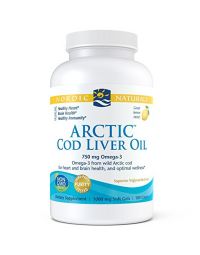
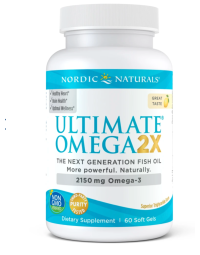
Search the blog
Article Categories
- All Articles (95)
- Rating Charts (1)
- Beauty & Skincare (17)
- FAQ (0)
- Hair Care (9)
- Health & Wellness (12)
- Anti-Aging (4)
- Kid's Health (0)
- Makeup (2)
- Men's Health (2)
- Oral Care (3)
- Sunscreen (7)
- Skin Tools & Treatments (10)
- Supplements (26)
- Videos (0)

